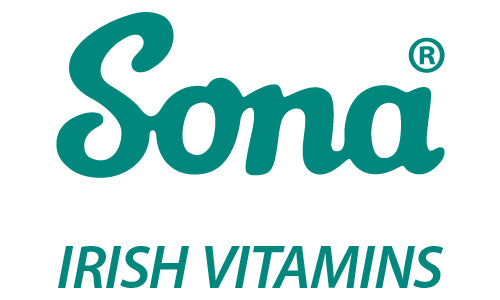
Vitamin B3, also known as niacin or niacinamide, is an essential nutrient. It helps convert food into energy, supports healthy skin and contributes to the normal function of the nervous system. It has also become a key ingredient in dermatology, frequently included in skincare products, and praised for its ability to improve skin texture and reduce irritation.
Recent findings have highlighted another important aspect of this vitamin: its potential role in liver health. Research now indicates that niacin may help in the management of fatty liver disease, a widespread metabolic condition affecting millions worldwide. This makes vitamin B3 a nutrient of interest not only for daily wellness but also for its emerging importance in clinical research.
What is Vitamin B3 (Niacin/Niacinamide)?
Vitamin B3 is a water-soluble vitamin that the body cannot store for long periods. It must be obtained regularly through diet or supplements. It occurs in two main active forms: niacin and niacinamide. Both forms are converted in the body into coenzymes that are vital for energy metabolism, cell repair and overall function.
Although closely related, niacin and niacinamide are not identical. Niacin is often discussed in relation to cardiovascular and metabolic health, while niacinamide has gained attention in dermatology for its role in skin barrier function, hydration and reducing inflammation. Importantly, both forms contribute to essential biochemical reactions, but they may be chosen for different purposes depending on health needs.
Niacin vs Niacinamide: What’s the Difference?
Although niacin and niacinamide are both forms of vitamin B3, they are used in different ways and have distinct effects.

In summary, both niacin and niacinamide contribute to essential body functions, but their applications differ. Niacin is often explored for its impact on metabolism and liver health, while niacinamide is favoured for skin health and cosmetic use.
Niacin Benefits for the Body
Vitamin B3 plays an essential role in keeping the body functioning properly. Beyond its contribution to daily energy metabolism, niacin is also linked to nervous system health and cardiovascular research.
Energy and Metabolism
Niacin is a building block of coenzymes (NAD and NADP) that are required for turning carbohydrates, fats and proteins into usable energy. Without sufficient vitamin B3, the body’s ability to produce and use energy efficiently is reduced.
Nervous System and Mental Function
Adequate niacin intake supports the nervous system, helping to regulate signals between cells and contributing to normal psychological function. Deficiency can lead to fatigue, irritability, and difficulties with concentration.
Cardiovascular and Cholesterol Research
High-dose niacin has historically been studied for its effect on cholesterol and triglycerides. While it is no longer widely used as a treatment due to side effects such as flushing, research interest remains in its metabolic role and potential for liver health.
Niacinamide Benefits for the Skin
Niacinamide, the other main form of vitamin B3, has become one of the most widely studied ingredients in skincare. Dermatologists often recommend it because it is well-tolerated and offers multiple benefits for maintaining healthy skin.
Skin Barrier and Hydration
Niacinamide strengthens the skin’s natural barrier, helping to retain moisture and protect against environmental stressors. Regular use has been associated with improved hydration and smoother skin texture.
Acne and Irritation
A recent review published in Antioxidants (2024) highlights the multiple functions of niacinamide, from improving skin barrier integrity to reducing irritation and pigmentation. Its anti-inflammatory properties make it useful in supporting acne-prone skin.
Pigmentation and Fine Lines
By regulating melanin production, niacinamide may help to reduce uneven skin tone and hyperpigmentation. It is also used in formulations aimed at softening the appearance of fine lines.
For more on skin nutrients, see our article on 8 Nutrients for Strong & Healthy Hair, Skin & Nails
Vitamin B3 and Fatty Liver: A New Research Perspective
Metabolic associated fatty liver disease (MASLD) affects nearly one in three people worldwide and has long lacked targeted treatment options. Recent scientific work is now opening a new window of opportunity, and vitamin B3 appears to play a promising role.
A collaborative study led by researchers from UNIST and Pusan National University identified a genetic factor called microRNA-93 (miR-93) as a driver of fat accumulation and inflammation in the liver. High levels of this molecule were found in both patients with fatty liver disease and in experimental models. By suppressing a key protective gene (SIRT1), miR-93 was shown to worsen lipid build-up and impair metabolic function.
The same research screened over 150 FDA-approved compounds and discovered that niacin (vitamin B3) was the most effective at reducing miR-93 activity. In laboratory models, niacin treatment lowered liver fat, improved insulin sensitivity, and restored healthy metabolic balance.
The study, reported in ScienceDaily (2025), highlights the potential of niacin to be repurposed as a safe, affordable therapy for fatty liver disease. These findings are still at an early stage and require further clinical trials. They underline why vitamin B3 is now being studied not only for skin and energy metabolism, but also for its possible role in managing one of today’s most common metabolic conditions.
Note: This research is promising, but it is still in the early stages. Vitamin B3 supplements should not be considered a treatment for fatty liver disease without medical supervision. Always consult a healthcare professional before using supplements for medical conditions.
How Much Vitamin B3 Do You Need Daily?
Vitamin B3 is water-soluble and cannot be stored in large amounts, which means it must be obtained regularly through food or supplements. A lack of vitamin B3 can lead to deficiency symptoms, with pellagra being the most severe form. The exact niacin dosage depends on age, sex and life stage, but the main recommendations for adults are;
|
Group |
Recommended Daily Intake |
|
Adult men |
16 mg NE* |
|
Adult women |
14 mg NE |
|
Pregnant women |
18 mg NE |
|
Breastfeeding women |
17 mg NE |
Source: Harvard T.H. Chan School of Public Health, The Nutrition Source (2023)
*NE = Niacin Equivalents, which include niacin from food and that made from the amino acid tryptophan.
Pregnant women require around 18 mg of niacin per day, slightly higher than the general adult intake. For more on nutritional support during pregnancy, see our article “Nutrition During Pregnancy: What Foods to Eat & What Supplements to Take”
A lack of vitamin B3 can lead to deficiency symptoms, with pellagra being the most severe form. Although rare in developed countries, a mild deficiency can cause fatigue, irritability, and digestive issues.
Possible Side Effects and Safety Notes
While vitamin B3 is essential for health, high-dose supplementation can cause unwanted effects.
Niacin Flush
One of the most common side effects of high-dose niacin (nicotinic acid) is the so-called “niacin flush.” This is a temporary reddening and warming of the skin, often felt on the face, chest and arms. Although harmless for most people, the sensation can be uncomfortable.
Other Side Effects
At higher intakes, niacin may also cause digestive discomfort, headache or, in rare cases, liver strain. This risk is mainly linked to sustained-release formulations or doses well above the daily recommended levels.
Safety Notes
For most adults, niacin obtained through diet and standard multivitamins is considered safe. Problems usually arise only with high-dose therapeutic use, which should always be supervised by a healthcare professional.
Final Thoughts
Vitamin B3, in the forms of niacin and niacinamide, supports energy, skin and nervous system health. Niacinamide has also become a reliable choice in skincare, while early research suggests niacin may play a role in liver health. A balanced intake is safe and beneficial, but high doses should only be taken under medical supervision.
References;
ScienceDaily, Fatty liver breakthrough: A safe, cheap vitamin shows promise. ScienceDaily, February 12, 2025. Available at: https://www.sciencedaily.com/releases/2025/09/250912195101.htm
Harvard T.H. Chan School of Public Health. The Nutrition Source – Niacin (Vitamin B3). Harvard University (2023). Available at: https//www.nutritionsource.hsph.harvard.edu/niacin-vitamin-b3
NIH Office of Dietary Supplements. Niacin Fact Sheet for Health Professionals. National Institutes of Health (2022). Available at: https://ods.od.nih.gov/factsheets/Niacin-HealthProfessional
